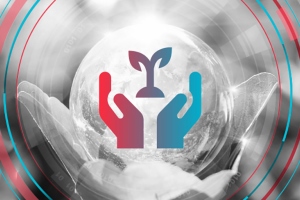The Next Generation Mobile Networks (NGMN) Alliance has released two new White Papers, “Green Future Networks: Sustainability Challenges and Initiatives in Mobile Networks” and “Green Future Networks: Network Equipment Eco-Design and End to End Service Footprint” of which the first is exploring the data-driven assessments and research of the environmental footprint of digital goods and services, while the second focuses on eco-design and its implications.
In its White Papers, developed by 24 companies working jointly on the Alliance’s Green Future Networks project, NGMN requires to put the focus on assessing the environmental footprint of the Information and Communication Technologies’ (ICT) sector. This should be done at the different levels of the supply chain and with emphasis on the Life Cycle Assessment (LCA) method as the basis of circularity.
The overall goal is to reduce the use of materials with high environmental impact i.e. critical raw materials in order to achieve a significant reduction of the environmental impacts and align with a 1.5°C trajectory in line with the ITU recommendation L.1470. NGMN encourages operators, vendors, research institutions and other ecosystem players to participate in standardisation efforts on the equipment environmental footprint reduction in order to share knowledge, develop and adopt common approaches.
Further, NGMN sees a strong need for the industry to increase the efforts in developing common methodologies to bring solutions to the complex question of assessing services’ environmental footprint. This might be realised for example through collaborative partnerships between actors with different expertise.
Anita Dohler, CEO at the NGMN Alliance, says, “In order to succeed in the implementation of real circular economy in the ICT sector, different sectors need to work together with global optimisation goals as a common strategy. We at NGMN invite operators, vendors, research institutions and other interested ecosystem players to take part in our Green Future Networks project to help further enlarging its global impact for the benefit of human.”
With its White Papers, the Green Future Networks project presents the method of life cycle assessment, which allows to more accurately assess the network equipment’s environmental footprint among others providing a view on the materials’ footprint and the role of critical raw materials as part of the products’ sustainable design (eco-design).
Furthermore, the benefits of network equipment re-manufacturing and refurbishment as well as innovation in packaging inspired by eco-design principles are exemplified. Also, the White Papers present a list of recommendations for operators and vendors on how to expand their activities regarding the eco-design of products showing how measures in different areas help reducing the environmental footprint.
Jeroen Cox, strategic lead energy & environment at KPN, says, “Critical raw materials are significant in the design of network equipment. Circular economy strategies like reducing, refurbishing or recycling should be considered to lower the supply risk of the materials in collaboration with partners in the value chain.”
Arash Ashouriha, SVP at Deutsche Telekom and chairman of the NGMN Board, says, “At Deutsche Telekom, we lay a great deal of emphasis on reducing waste and recycling of resources. Our approach of ‘sharing instead of owning’ contributes to resource conservation which is not only good for the environment but also brings along cost savings, and reduced waste of material. We are very excited to be a part of NGMN’s eco-design initiative and we further encourage the industry to keep circular economy as a central focus point in all the activities.”
The NGNM Green Future Networks project was launched in October 2020. It works actively with standardisation organisations related to sustainability efforts relevant for telecom networks and issues new recommendations focusing on metrics, eco-design and energy efficiency to provide guidance to the telecommunication industry in order to significantly reduce the environmental impacts and align with a 1.5°C trajectory in line with the ITU recommendation L.1470.
For further details see here and here.
Comment on this article below or via Twitter: @VanillaPlus OR @jcvplus






